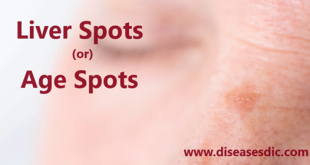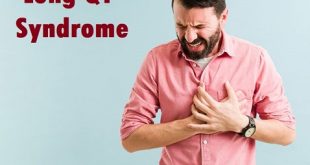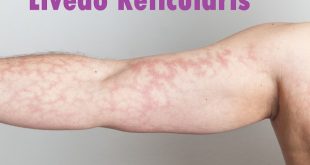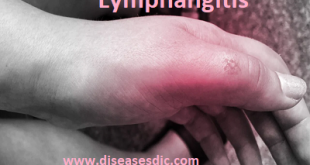Definition
Lipedema is a condition that mostly affects women and is characterized by a symmetrical swelling in the legs, thighs, and buttocks and sometimes the arms due to the deposits of fat beneath the skin. It is rare in men. It can be extremely painful. The affected areas can be tender and there is a general tendency to bruise easily. Over time, lipedema can result in fluid retention in the affected parts, resulting in a medical condition called lymphoedema.
Lipedema
Although it has not been confirmed, it is thought that lipedema may have a genetic basis, as in some cases there is a family history of the condition. Sometimes it is mistaken for excessive lymphoedema, weight gain, obesity or cellulite or is assumed to be due to a lack of exercise. It can have a significant impact on quality of life.
History
Although first identified in the United States, at the Mayo Clinic in 1940, lipedema is barely known in that country – to physicians or to the patients who have the disease. It often is confused with obesity, and a significant number of patients currently diagnosed as obese are believed to have lipedema, either instead of or in addition to obesity.
The word lipedema has multiple spellings. Lipedema is the American spelling, while lipedema is used in Britain, Australia, and Europe. Lipodema is also used occasionally.
Epidemiology
Although there is no epidemiological data on the prevalence of lipedema, Földi described a prevalence of 11% in women, is extremely rare in men. Herpertz reports that it accounted for 15% of patients in a lymphedema clinic. A recent study reports that 6.5% of the children with the referral diagnosis of lymphedema actually suffer from lipedema.
Types
Causes of Lipedema
- The cause of lipedema isn’t known, but in some cases, there’s a family history of the condition. It seems likely that the genes you inherit from your parents play a role.
- It tends to start at puberty or at other times of hormonal change, such during pregnancy or the menopause, which suggests hormones may also have an influence.
- Although the accumulation of fat cells is often worse in obese people, it isn’t caused by obesity and can affect people who are a healthy weight. It shouldn’t be mistaken for obesity, and dieting often makes little difference to the condition.
Symptoms
- The legs are enlarged bilaterally arms too can be affected
- The waist is small in proportion to thighs, buttocks, and legs
- Feet and hands are exempt and a ‘bracelet’ effect can appear just above the ankles and wrists
- Legs/arms can be extremely painful, even to touch
- Affected limbs bruise easily
- The fat is soft to touch and wobbly, while skin can be cold to touch
- It can become worse in hot weather
- Diet and exercise, while important, can have minimal effect
- Increase in Lipedema is often noticed when significant hormonal changes happen
- Skin can have a cellulite like an appearance.
Complications of Lipedema
Lipedema can be tender and painful, and easy bruising occurs due to capillary weakness. In time, it can be complicated by lymphoedema; the combination of lipedema and lymphatic insufficiency is called lipo-lymphoedema or lymph-lipedema. Lymphoedema can result in warty papules, exudation of lymph, dermatitis and other complications. Increasing weight of the lower limbs can lead to orthopedic problems.
Diagnosis and test
Lipedema is diagnosed by its clinical features. It fails to improve on compression if this is used following a misdiagnosis of lymphoedema, in which swelling is due to the accumulation of lymph, a protein-rich fluid. However, lymphoedema may also develop within longstanding lipedema (lipo-lymphoedema). This is recognized by the development of irregular lumps, and progression of swelling to involve the feet.
It should be distinguished from simple obesity, which affects the whole body, and Dercum disease, which occurs at a later age and is due to lipoma deposition on trunk and limbs.
These are not usually necessary.
- Ultrasound examination of may show normal dermis, and thickened subcutis with increased echogenicity. In contrast, lymphoedema has increased dermal thickness and decreased echogenicity.
- CT scan shows thickened skin alone in lipedema, and fluid accumulation, honeycomb pattern and muscle enlargement in lymphoedema.
- MRI is sometimes used to evaluate lymphatic circulation.
Treatment and medications
Dieting and exercising will not reduce the fat involved in lipedema. But it’s still important to do those things because they can help you lose weight from lipedema fat and reduce inflammation. A treatment called complete decongestive therapy can ease painful symptoms. Complete decongestive therapy involves:
Manual lymphatic drainage: A form of massage that uses gentle, rhythmic pumping movements to stimulate the flow of lymph around blocked areas to healthy vessels, where it can drain into the venous system. This helps relieve pain and prevent fibrosis.
Compression: The use of stretch bandages or custom-fitted pantyhose, panties, or spandex shorts to increase tissue pressure in the swollen legs and lessen the odds of fluid building up again.
Exercise: Helps to reduce fluid build-up, boost mobility, and maintain or improve how well your legs work.
Thorough skin and nail care: Helps lower the risk of wounds and infection if you have lipedema associated with swelling.
Liposuction: Specifically water-assisted liposuction and tumescent liposuction, can remove the lipedema fat. The procedure uses a hollow tube that is placed under the skin to suction the fat tissue. Several sessions may be needed depending on the amount of abnormal fat.
Prevention of Lipedema
There is no known way to prevent lipedema. Some treatments, both conservative and surgical, may help some people postpone or prevent symptom worsening sometimes. If it is diagnosed early, which currently is very rare, it is possible to prevent a significant expansion of lipedematous fat cells and to alert patients to their heightened risk factors so they can take appropriate action.
 Diseases Treatments Dictionary This is complete solution to read all diseases treatments Which covers Prevention, Causes, Symptoms, Medical Terms, Drugs, Prescription, Natural Remedies with cures and Treatments. Most of the common diseases were listed in names, split with categories.
Diseases Treatments Dictionary This is complete solution to read all diseases treatments Which covers Prevention, Causes, Symptoms, Medical Terms, Drugs, Prescription, Natural Remedies with cures and Treatments. Most of the common diseases were listed in names, split with categories.








This is what I’ve been trying to show and tell my Doctor ;for the last four years and he’s not lisecnsing to me .He just give me more water pills and tell me to keep losing wt…I’ve tried very wt. losing plan and a full gastro bypass. I lost 145lb . BUT due to 4 another Suregres. I immoble for six years; UP to date APIRL 24,18. P.S. HELP!!!.
please consult a doctor and diagnose the problem which you have.
please sir burn details types management or treatment
disaster details plan and management
endometritsis details types cause treatment
functional uterine bleeding details disease and treatment
therefore can we say that lipedema can occur due to fat accumulation in body since not all obese people are affected
It happens when fat is distributed in an irregular way beneath your skin, usually in the buttocks and legs.
I want to no which drug are good for it treatment.
Guaifenesen 600 mg twice daily
N-acetyl-cysteine – 500-600 mg 1-2x/day
Mexilitene=
Pregabalin or gabapentin
Amitryptiline
Ketoprofen
please sir frozen shoulder details type of management or treatment
very soon we will update about frozen shoulder. keep reading our site to know more about diseases and treatments.
Good evening. it is documented according to prevention of the dieases, but which region is most affected bearing in mind that Southern Africa has the most statistics with dieases burden in the world
please read epidemiology in the post.
i am so happy from your best information thanks dear dear dear
thank you very much because I don’t know what to do about it, but now I know.
very well informations.
Sir plzz Tell me managament/treatment for lepidemia patient and also tell me its proper medication and lab tests.
please consult a doctor to get proper medications and lab test diagnosis.
I was diagnosed at the lymphedema Institute in Bautmont, Texas, on my birthday September 17, 2015. Is there any chance that a Physician can help people with this third stage problem? I am begging you “educated individuals” to help, help, help, help, help, help,
both of my thighs have bursted opened. I want to walk again. I hope this not offensive. Thanks for your help.
Please consult a doctor.
very interesting!
does levocarnitine works here? it’s used to burn excess fat in body.
No, it can’t be used for this disease.